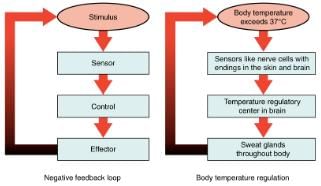Test: Human Excretory System - 3 - NEET MCQ
30 Questions MCQ Test Topic-wise MCQ Tests for NEET - Test: Human Excretory System - 3
Loop of Henle is associated with :-
[Uttaranchal PMT 2004]
| 1 Crore+ students have signed up on EduRev. Have you? Download the App |
Human urine as compared to human blood is normaly :-
[Bihar 2004]
Uric acid is the main excretory product in :-
[Bihar 2002]
Which of the following is not situated in the cortical region of the kidney?
Absorption of H2O in DCT is controlled by :-
[UP CPMT 2002]
A condition in which body's internal environment remains relatively constant within limits is called
[UP CPMT 2004]
The most abundant, harmful and universal waste product of metabolism is:
[UP CPMT 2004]
Urea is directly produced in mammals from :-
[UP CPMT 2005]
Glomerular hydrostatic pressure is present in :-
[UP CPMT 2005]
Absorption Na+ and K+ ions does not occur in :-
[MP PMT 2004]
Liquid which collects in the cavity of Bowman's Capsule is :-
[MP PMT 2004]
Mammalian kidney resemble contractile vacuole of Amoeba in excretion of :-
[MP PMT 2006]
The hormone secreted by kidney is :-
[MP PMT 2001]
Diuresis is a condition, which is characterized by
[MP PMT 2001]
Loop of Henle is primarily meant for absorption of :-
[MP PMT 2002]
Which of the following is metabolic waste of protein metabolism :-
[MP PMT 2002]
|
9 docs|1272 tests
|


















